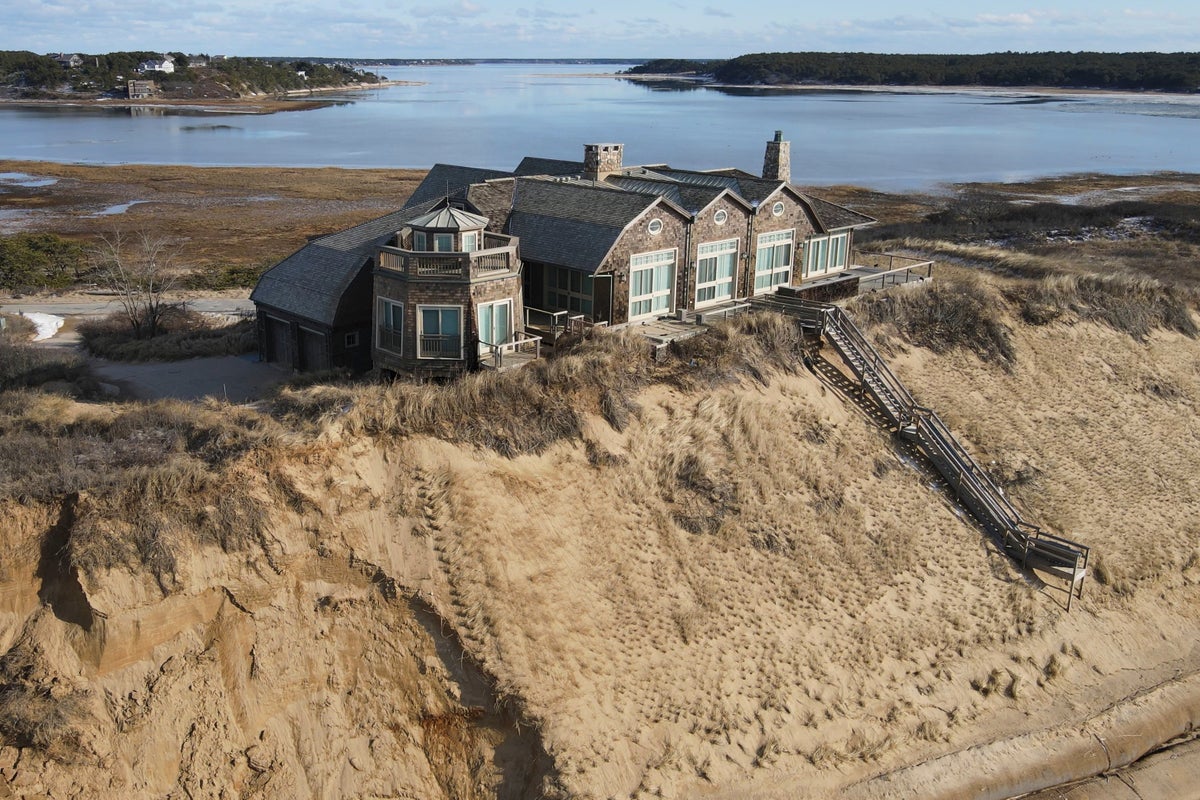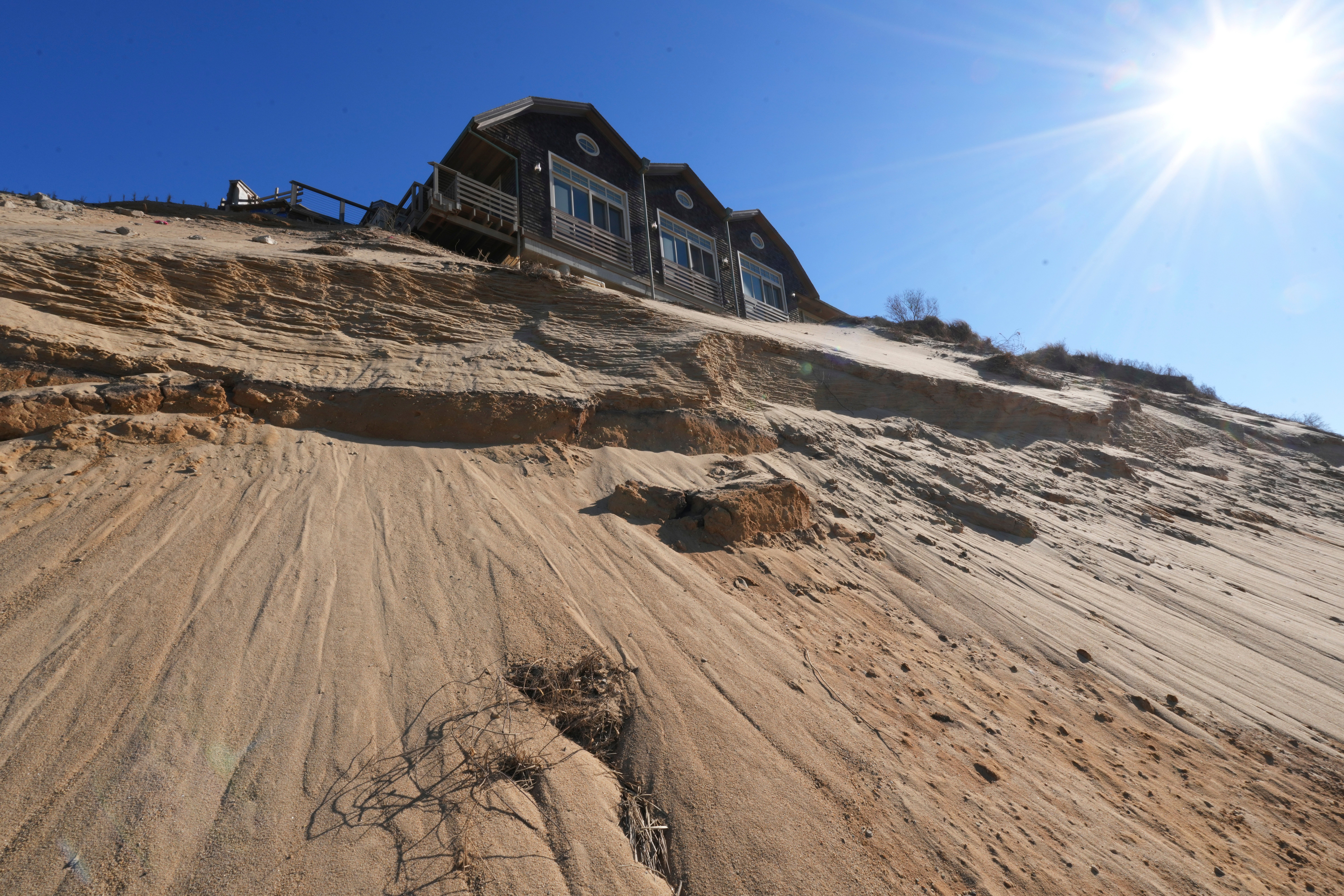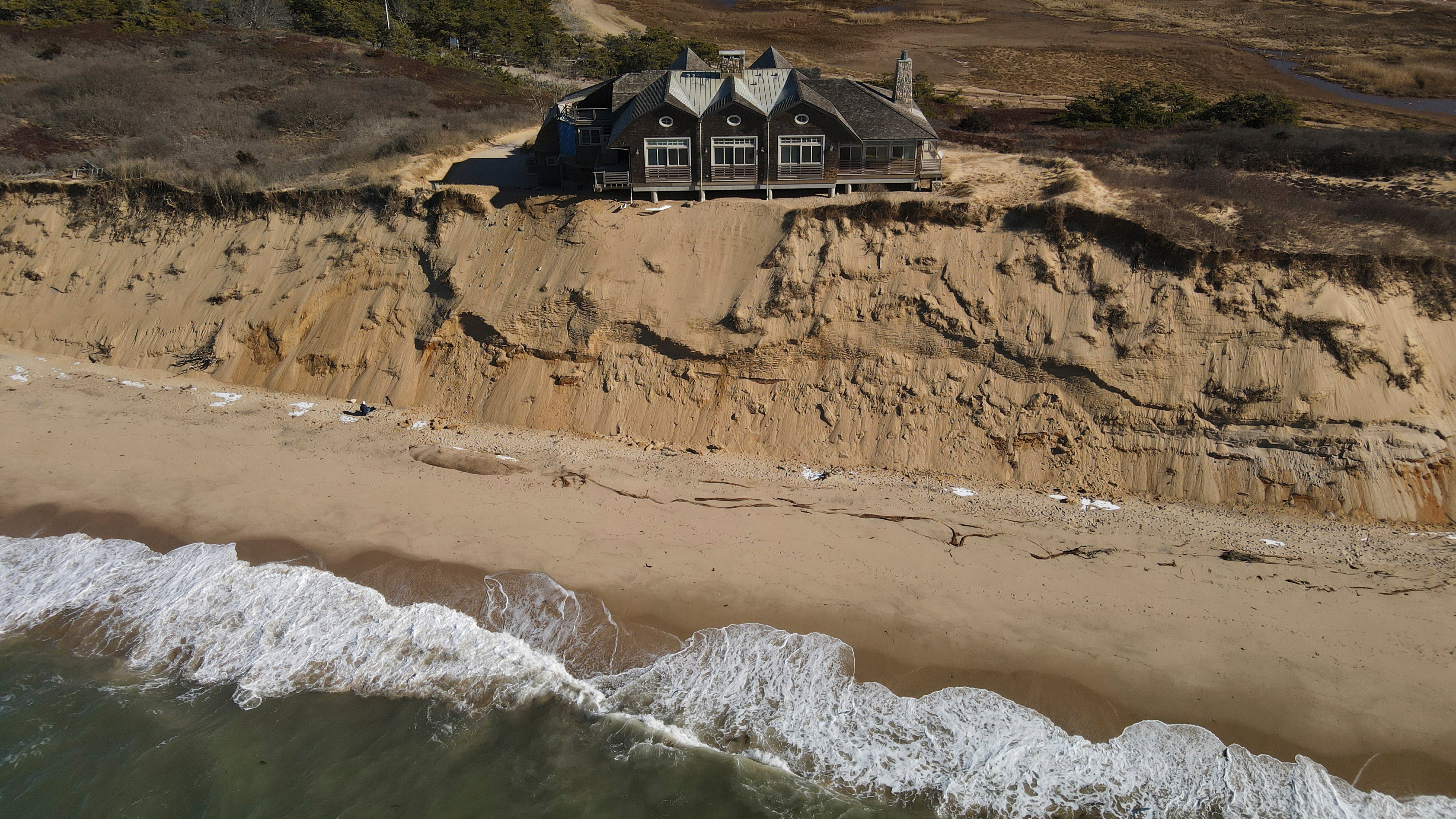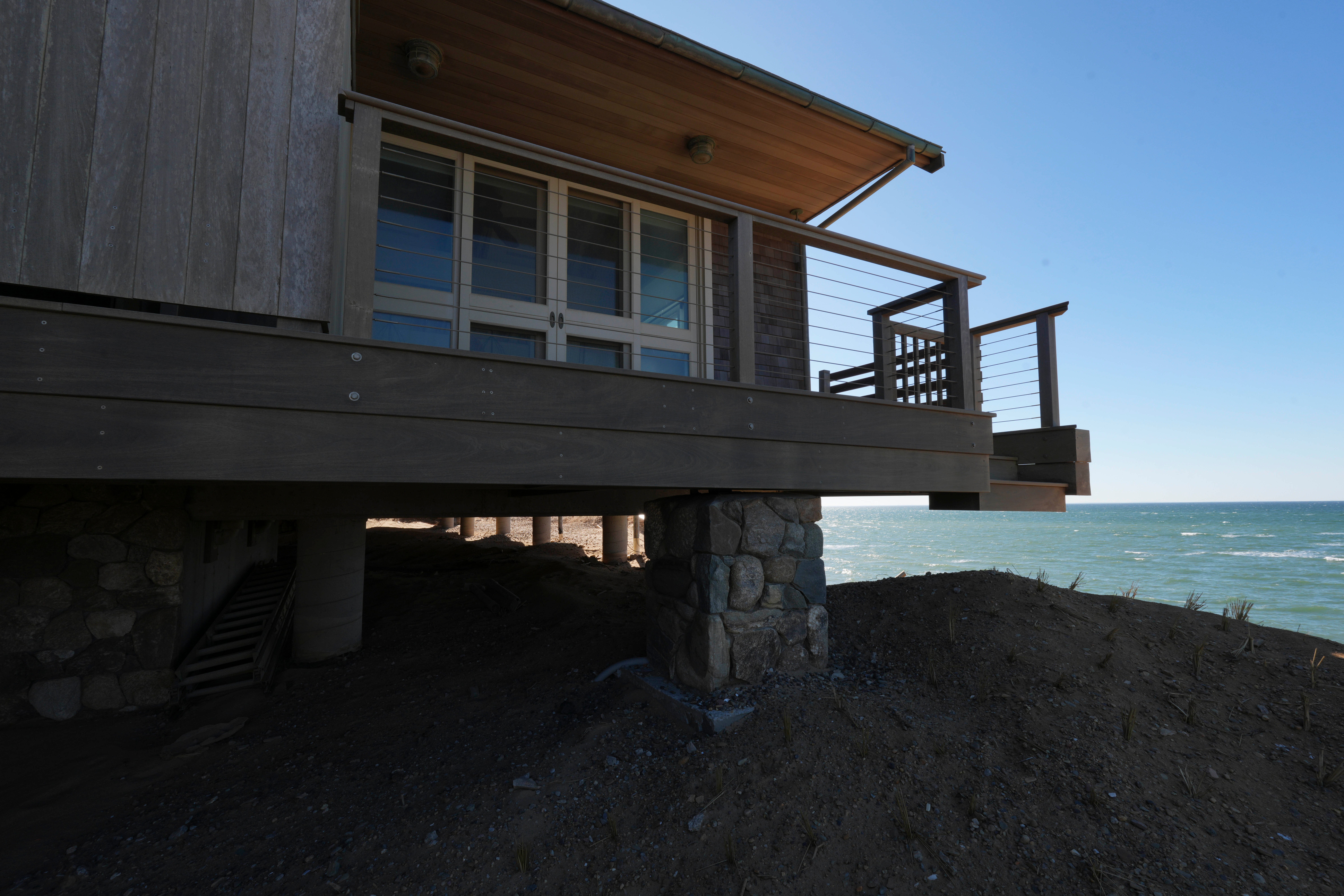
A multimillion-dollar house overlooking Cape Cod Bay is teetering on the brink of collapse, a stark illustration of the relentless power of coastal erosion exacerbated by climate change.
The home, perched precariously on a sandy bluff in Wellfleet, is a ticking time bomb, its concrete footings exposed as the land beneath it steadily disappears.
Once boasting expansive sliding doors that opened onto a deck and hot tub, the house now stands barricaded, a desperate attempt to prevent an imminent plunge to the beach 25 feet below. The previous owner, aware of the encroaching erosion, had already dismantled the deck and a bedroom tower before halting further work and entering a dispute with the town. The property has since been sold to a salvage company unwilling to finance its demolition.
Wellfleet officials are deeply concerned about the potential environmental consequences of the house’s inevitable collapse. They fear debris will damage the delicate oyster beds in the harbor, a vital part of the local economy and a source of some of New England’s most sought-after oysters. A town-commissioned report paints a grim picture, predicting the 5,100-square-foot structure will succumb to the sea within three years, possibly much sooner.
The looming demise of this coastal home serves as a stark reminder of the vulnerability of building along the Cape’s ever-shifting shoreline, where rising sea levels, fueled by climate change, are accelerating the erosion process.
“I mean, the cape has always been moving,” said John Cumbler, a retired environmental history professor who also serves on the Wellfleet Conservation Commission. "The sand is moving."

The house was built in 2010 on Cape Cod on the bay side of the peninsula.
Its original owners, Mark and Barbara Blasch, sought permission from the commission in 2018 to build a 241-foot-wide seawall to stave off erosion. The commission's seven members — all volunteers — rejected the seawall on the grounds that it might have unintended effects on the beach and the way water carries nutrients in the bay. They also questioned whether it would actually save the house.
The property is within Cape Cod National Seashore. The National Seashore Administration supported rejection of the seawall because of the “critical location” within the seashore and Wellfleet Harbor area, including critical habitat and valuable shellfish operations.
The Blasches appealed the rejection in state district court and lost. An appeal to the state's Superior Court is pending.
A New York man, attorney John Bonomi, bought the house in 2022 for $5.5 million, even as its future was in doubt. Bonomi's attorneys declined to comment for this story.

A report prepared for Wellfleet last year by Bryan McCormack, a coastal processes specialist with the Woods Hole Oceanographic Institution Sea Grant, estimates that the bluffs are eroding at a rate of 3.8 to 5.6 feet a year. The report estimated collapse in up to three years, but likely sooner.
The report said a collapse could send debris into Wellfleet Harbor, where the town's namesake oysters, well known to shellfish lovers, take two to three years to reach maturity.
“The house has a lot of fiberglass insulation in it. It has toxic material in it," Cumbler said. “If that toxic material gets into Wellfleet Harbor, which is where the currents will take it, it could endanger the oyster industry in Wellfleet, our major industry outside of tourism.”

Bonomi "came to us back in October and said, yes, we understand the house is in danger of falling into the sea, and we will give you a plan by January for what we will do with the house,” Cumbler said. “We asked for a plan to remove it from the danger.”
That plan was supposed to be presented at the commission's January meeting. But Bonomi's attorney, Tom Moore, wrote to the town in December to say Bonomi had sold the house to CQN Salvage, a company incorporated in October, that Moore was also representing. Moore wrote that the town "is on notice to take whatever steps it deems prudent to prevent the collapse of the embankment and the other consequences of further erosion. CQN Salvage is ready to work alongside the town in such efforts but will not fund them.”
It's not clear who owns CQN Salvage. Its incorporation records in New York state don't list any officials. Moore declined to speak with The Associated Press.
At the January meeting, Moore appeared by video and told the commission that the “bare minimum estimate” to remove the house was at least $1 million.
“So, you plan to do nothing and allow it to fall into the water?" Lecia McKenna, the town's conservation agent, asked Moore.
“I plan to ask you to not let it fall into the water,” Moore responded.
The commission voted to extend to June 1 the deadline to comply with its enforcement order.
For now, the town is left to simply watch the house. When the AP recently visited the site, 20 mph winds were hitting the bluffs and sand could be seen trickling down.
The sea level at nearby Falmouth has risen 11 inches (about 28 centimeters) in the past 90 years, but the pace is accelerating. An AP analysis of data from the National Oceanic and Atmospheric Administration found the sea level around Cape Cod between 1995 and 2024 was rising at an annual rate of 0.16 inch (about 4 millimeters) faster than the prior 30-year period.
McCormack, the Woods Hole specialist who prepared the report for the town, said it's difficult to attribute erosion at a single property to climate change and sea level rise. And he said Cape Cod has been eroding “for tens of thousands of years.”
But he said the bluffs have receded 54 feet since 2014, and the erosion rate over the last decade “has exceeded long-term rates published by the Massachusetts Office of Coastal Zone Management.”







